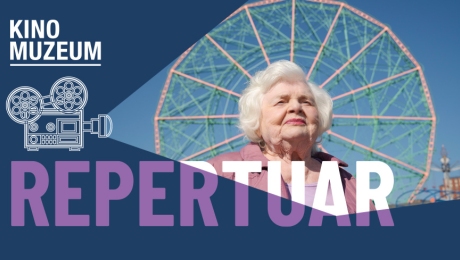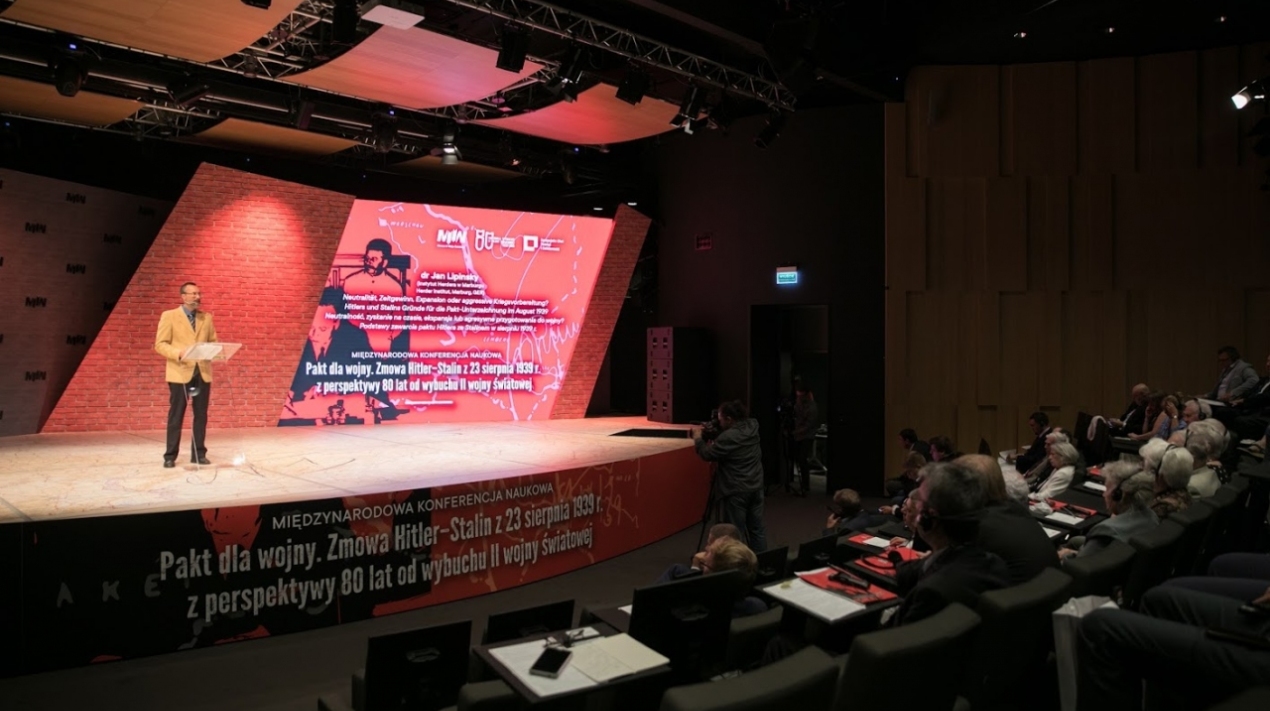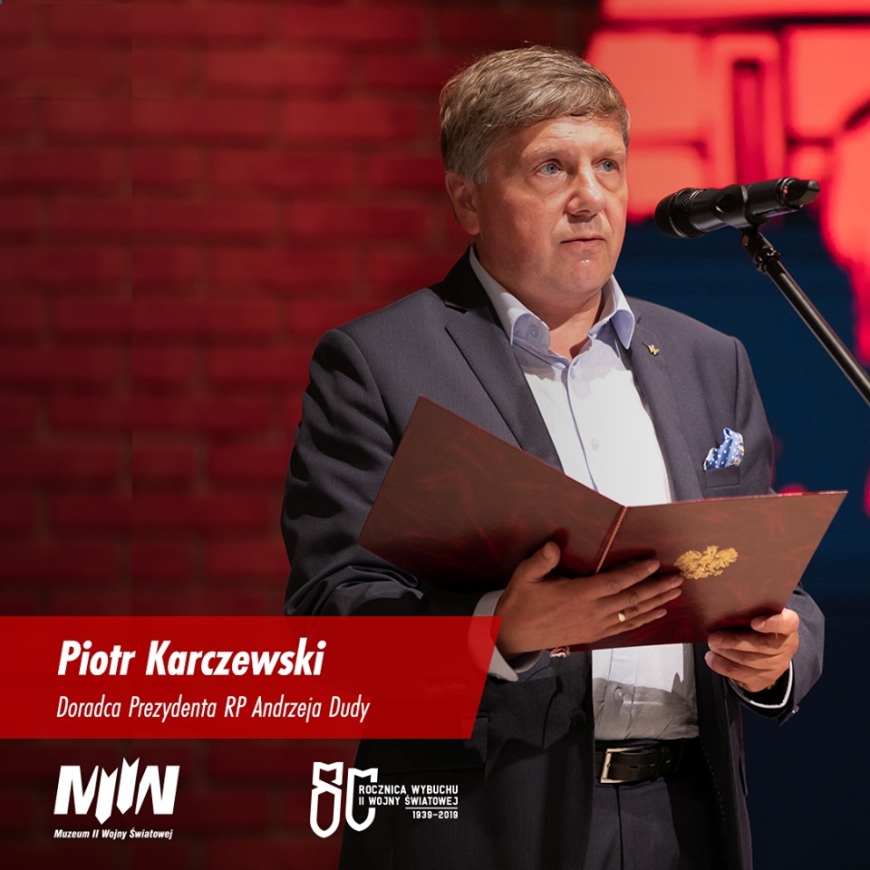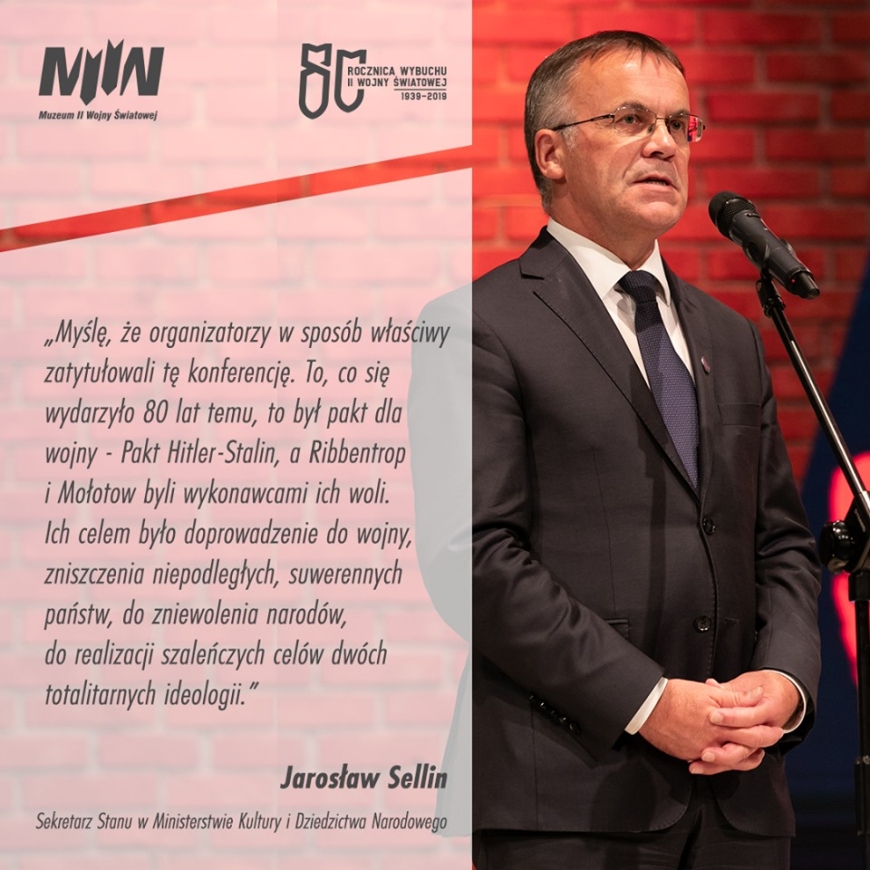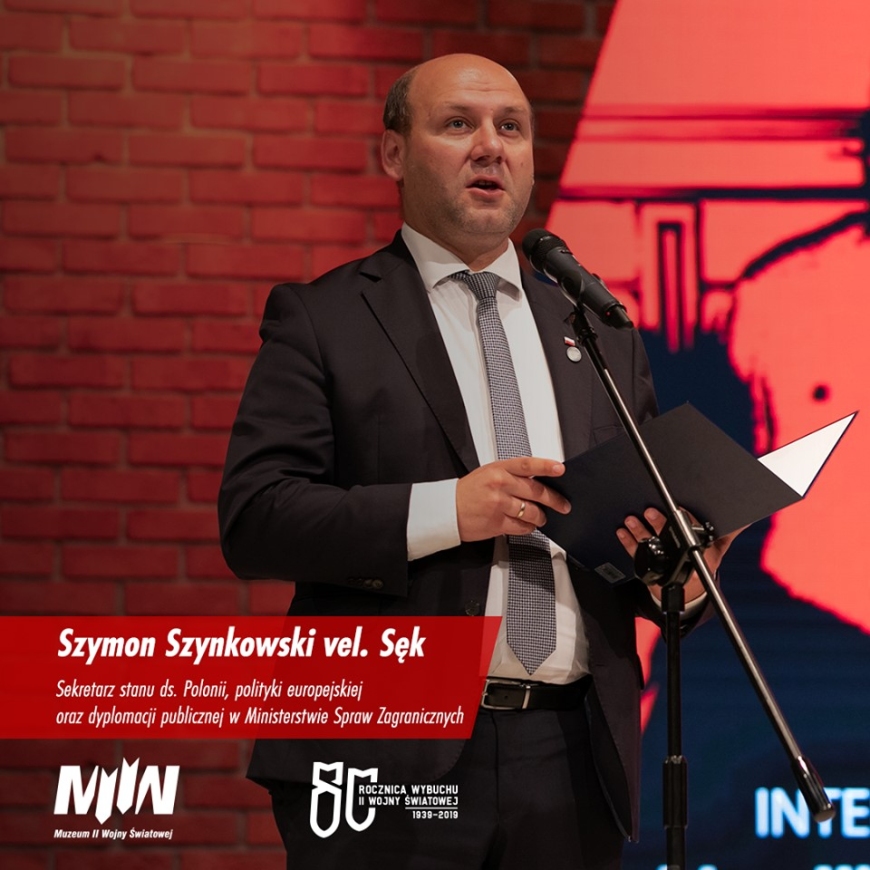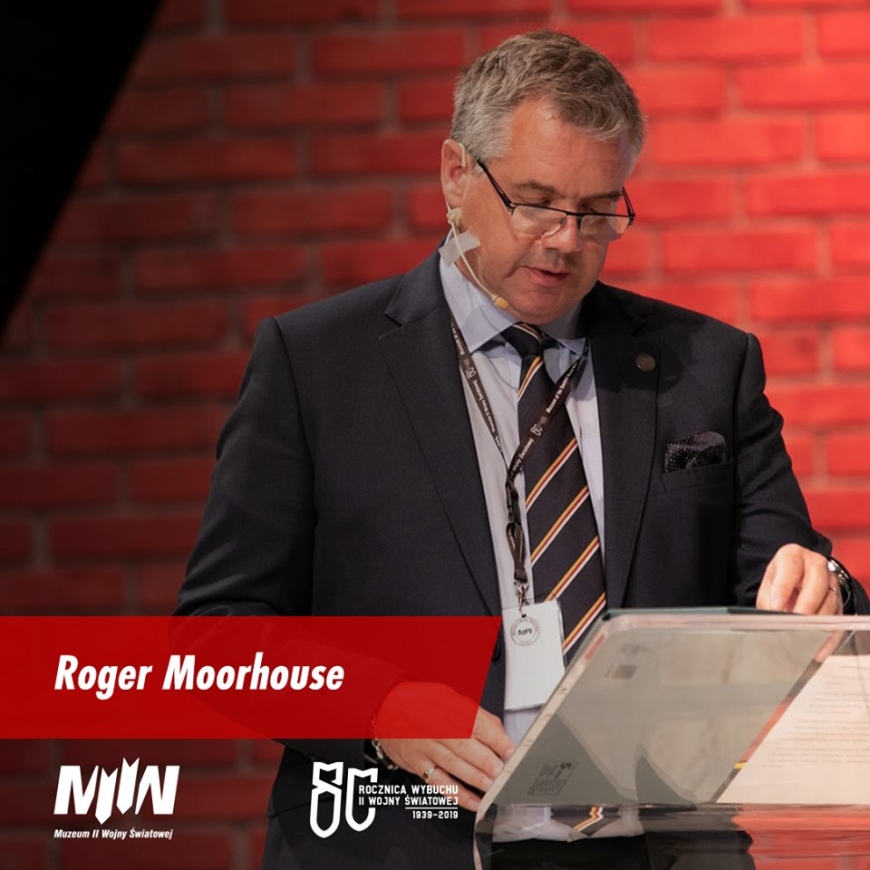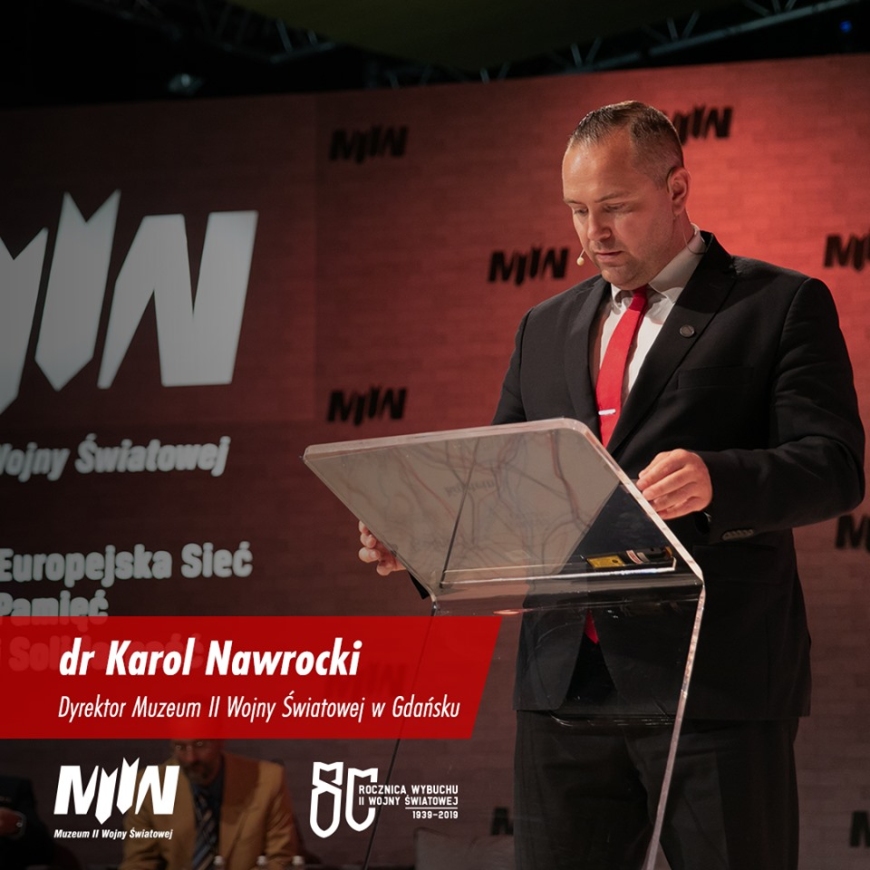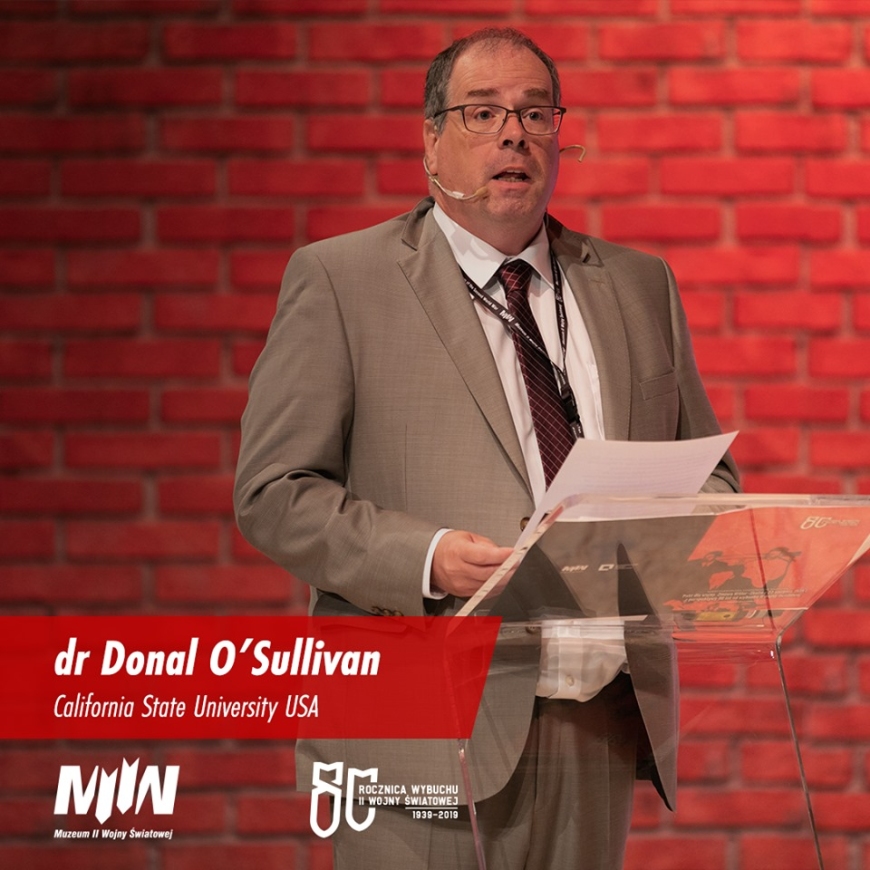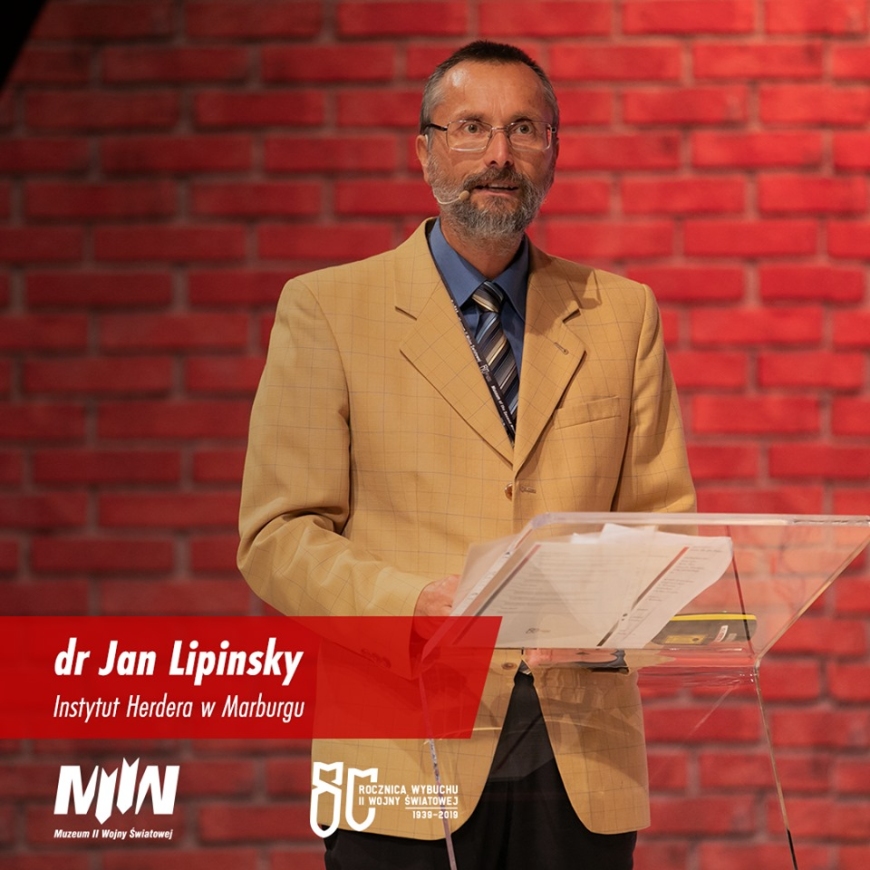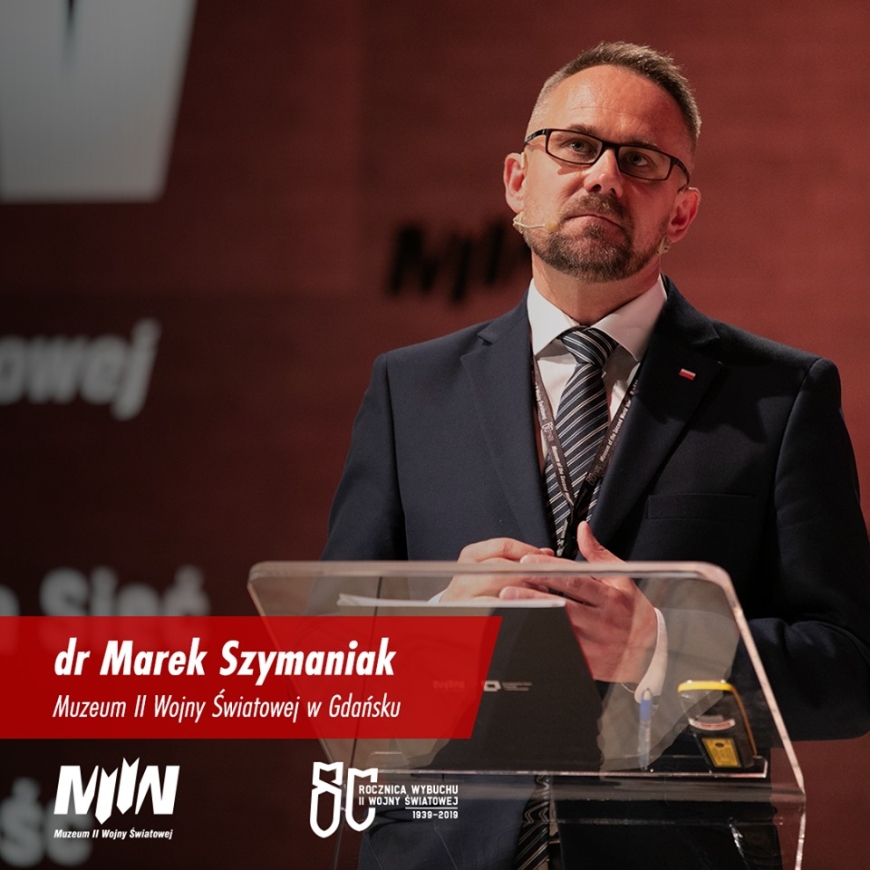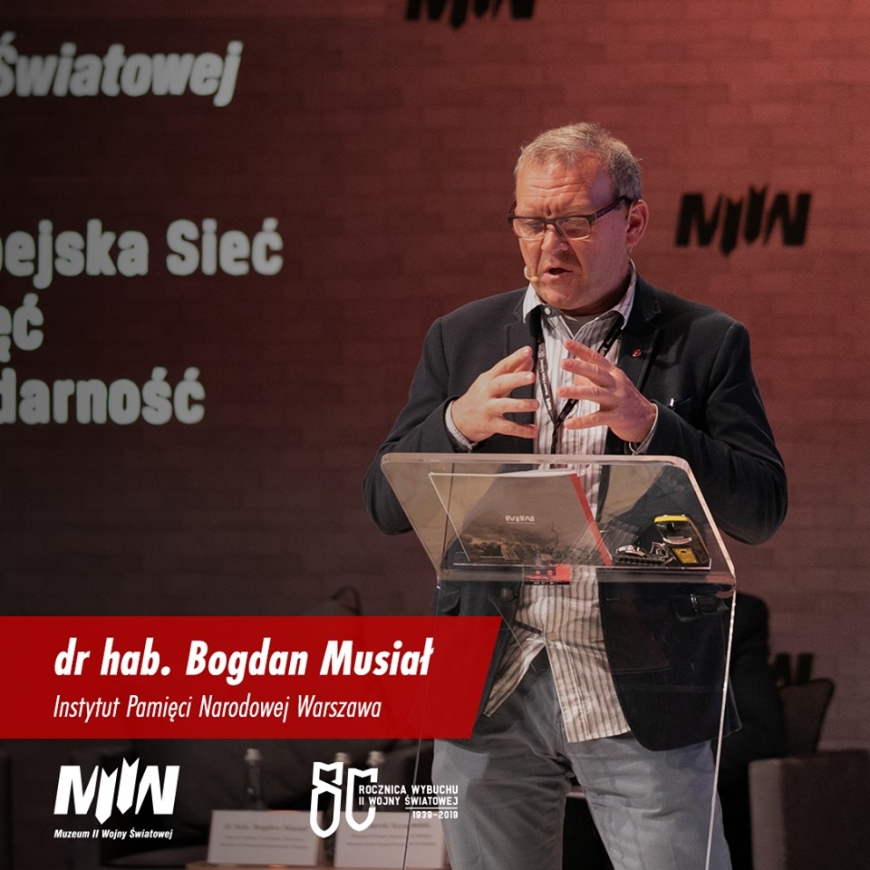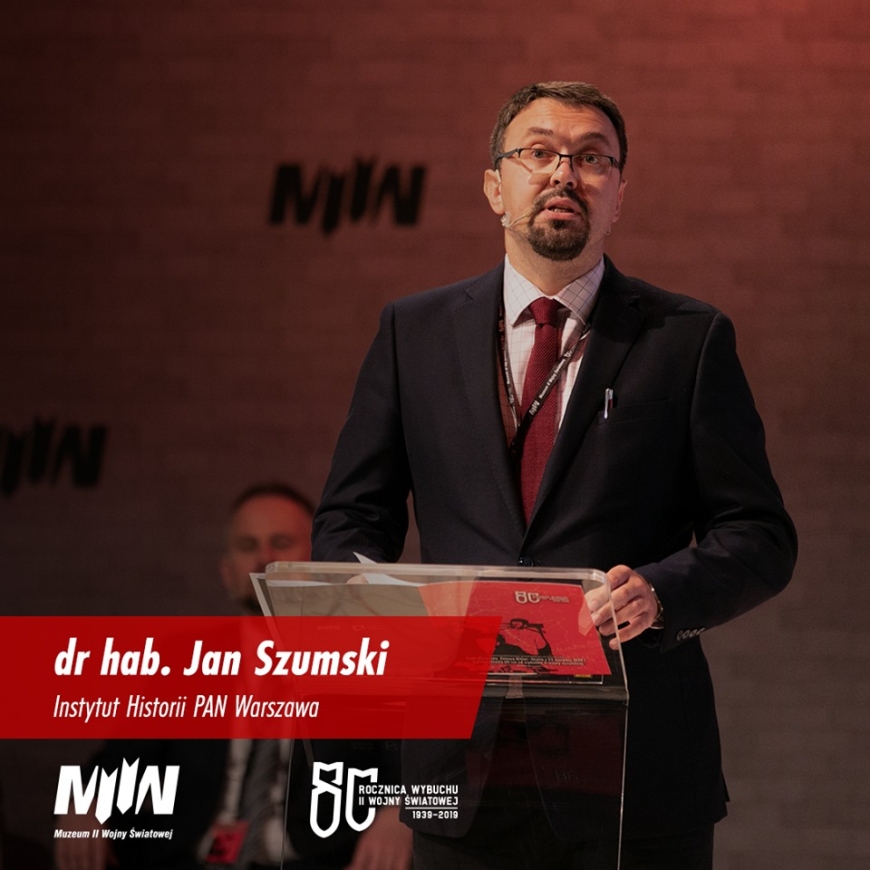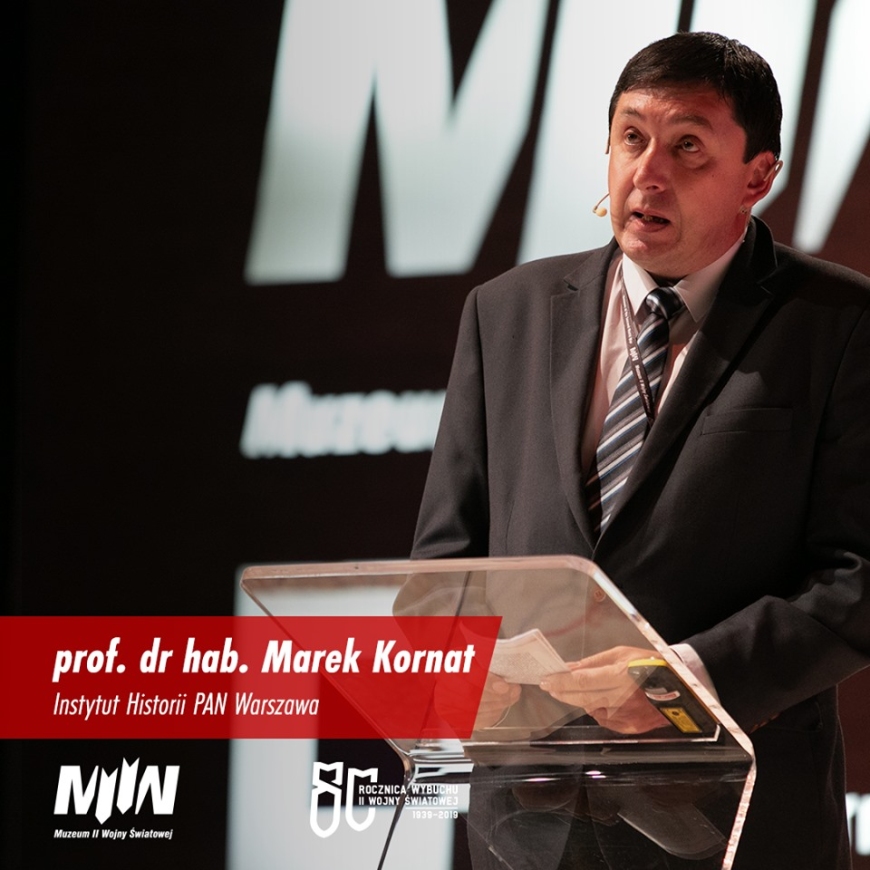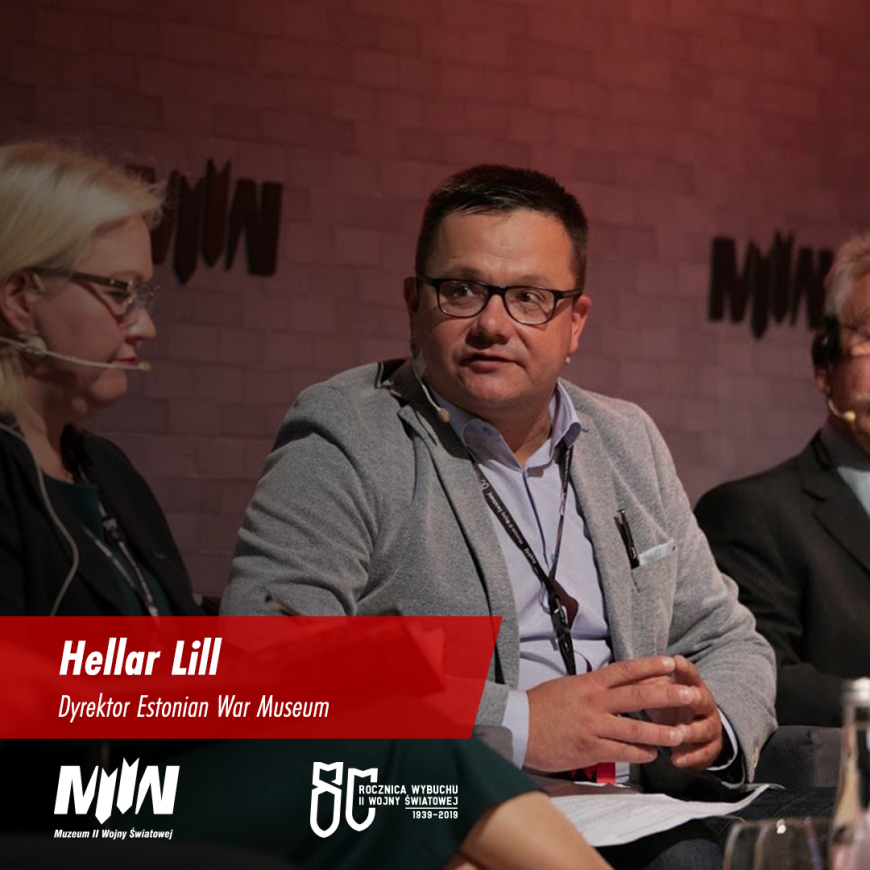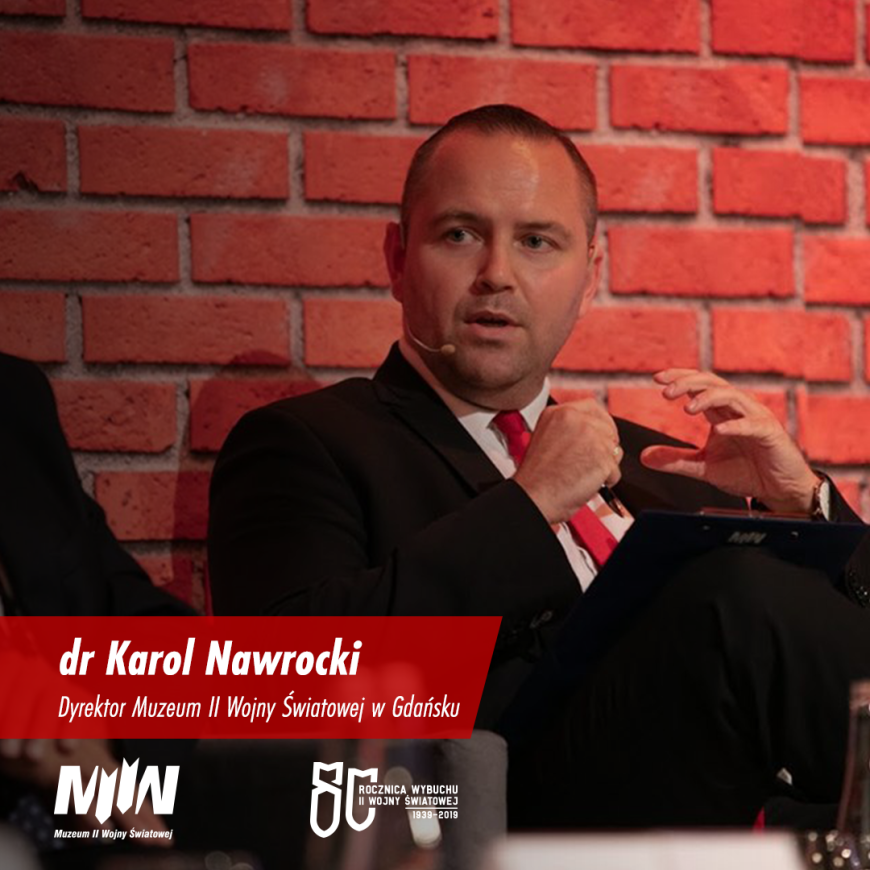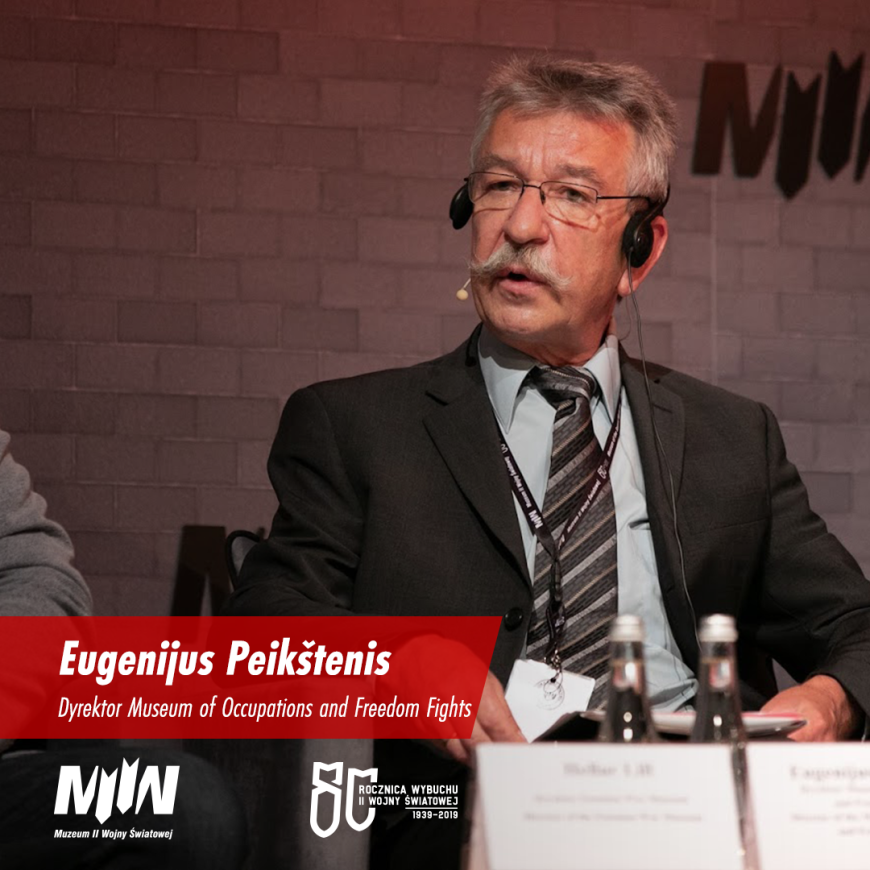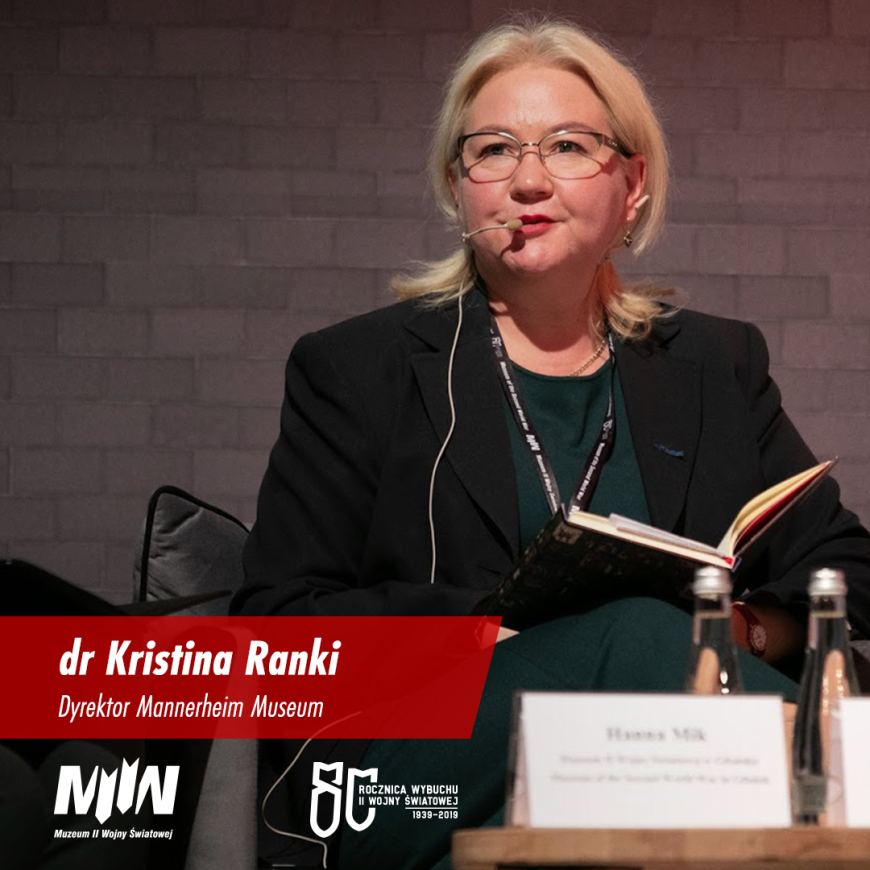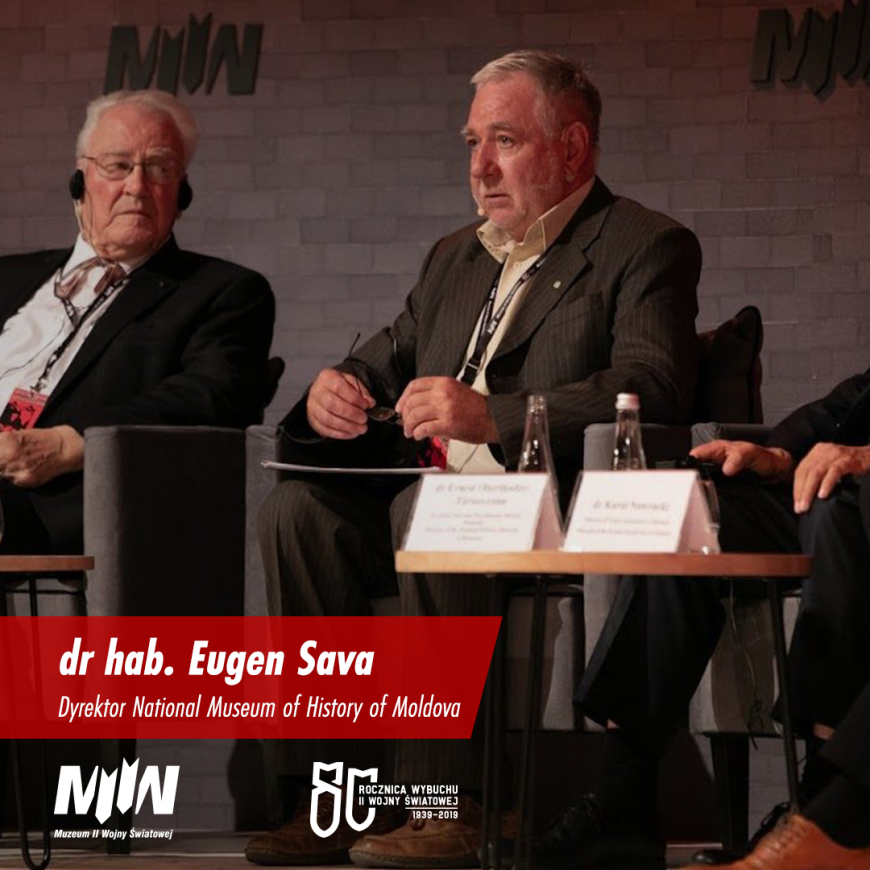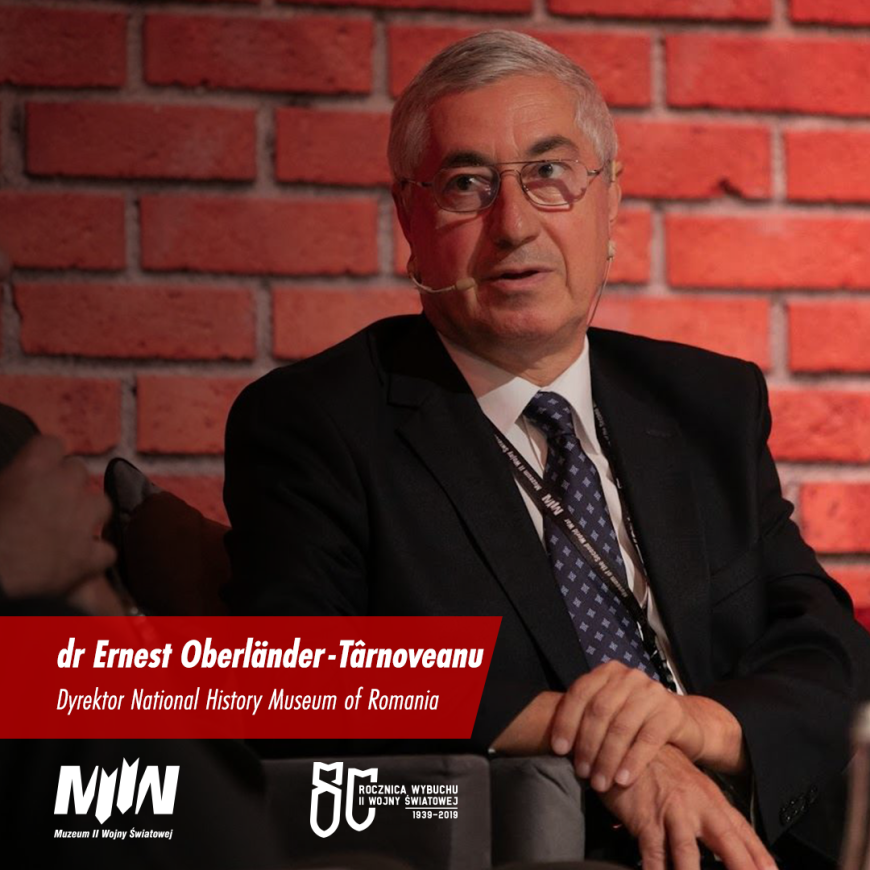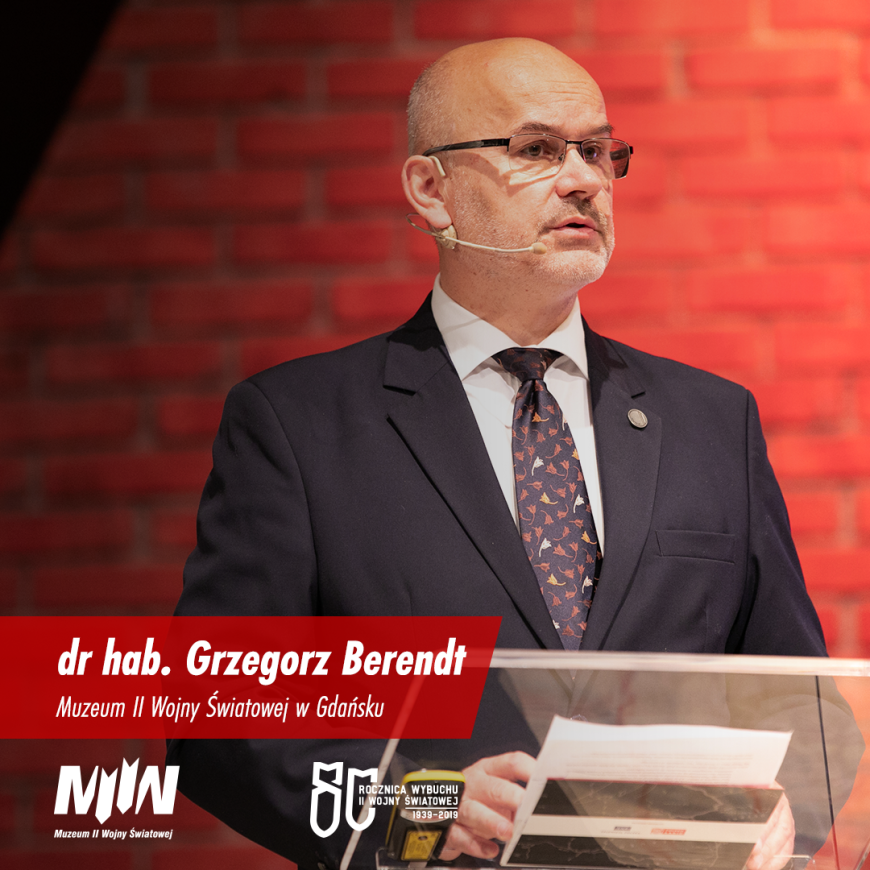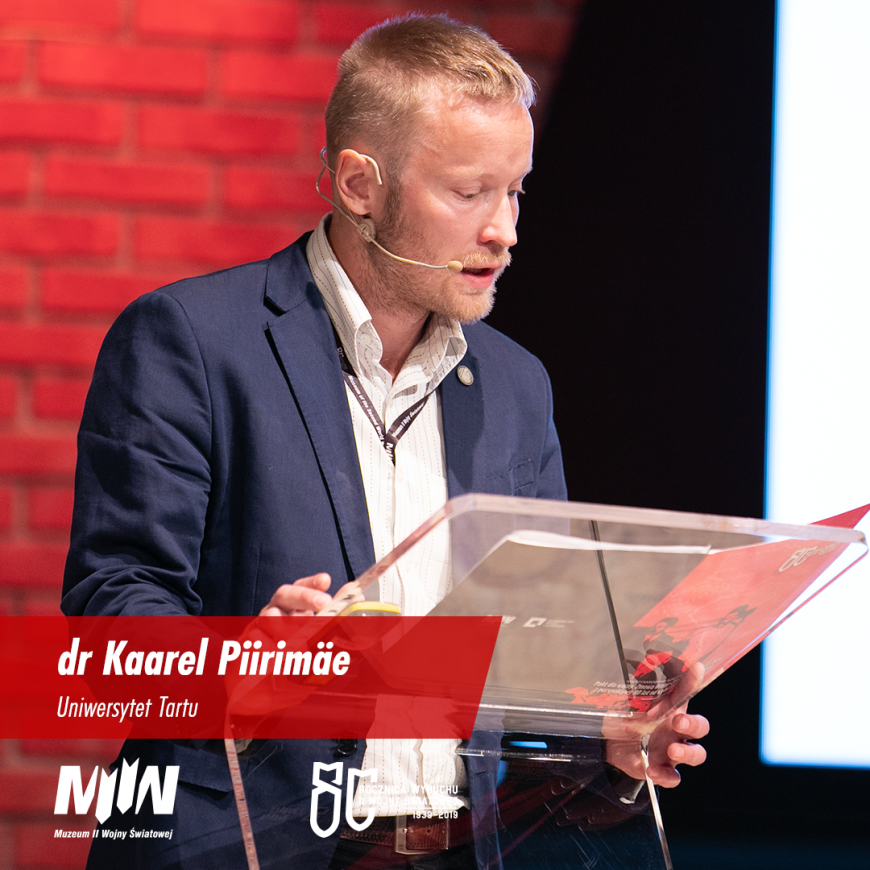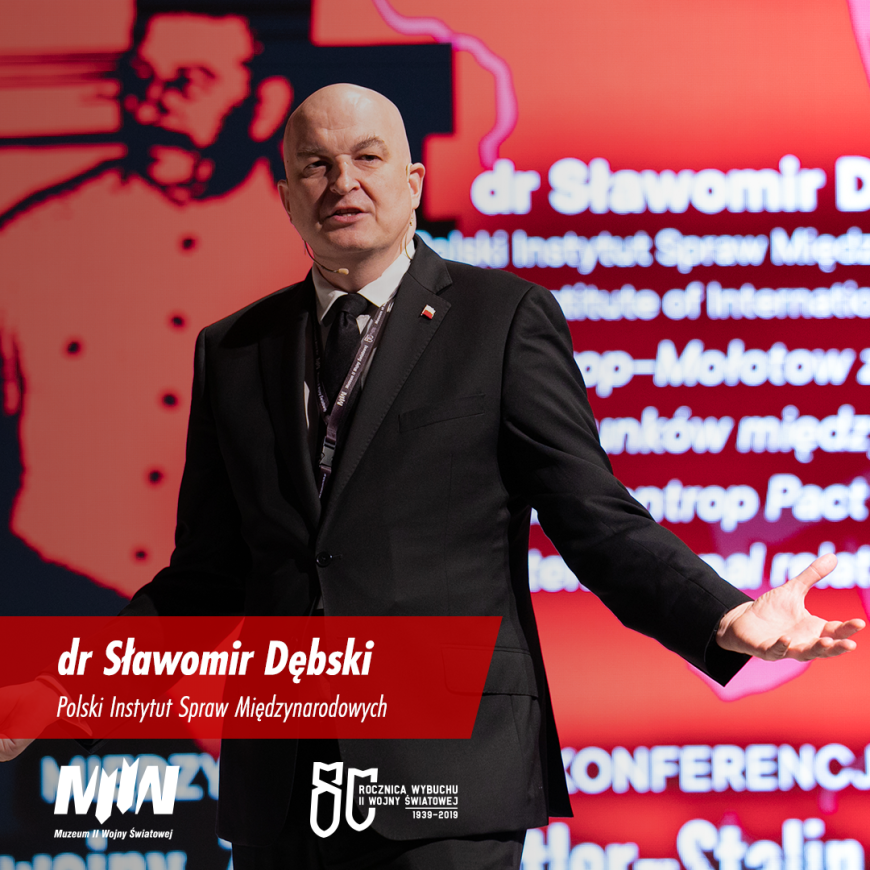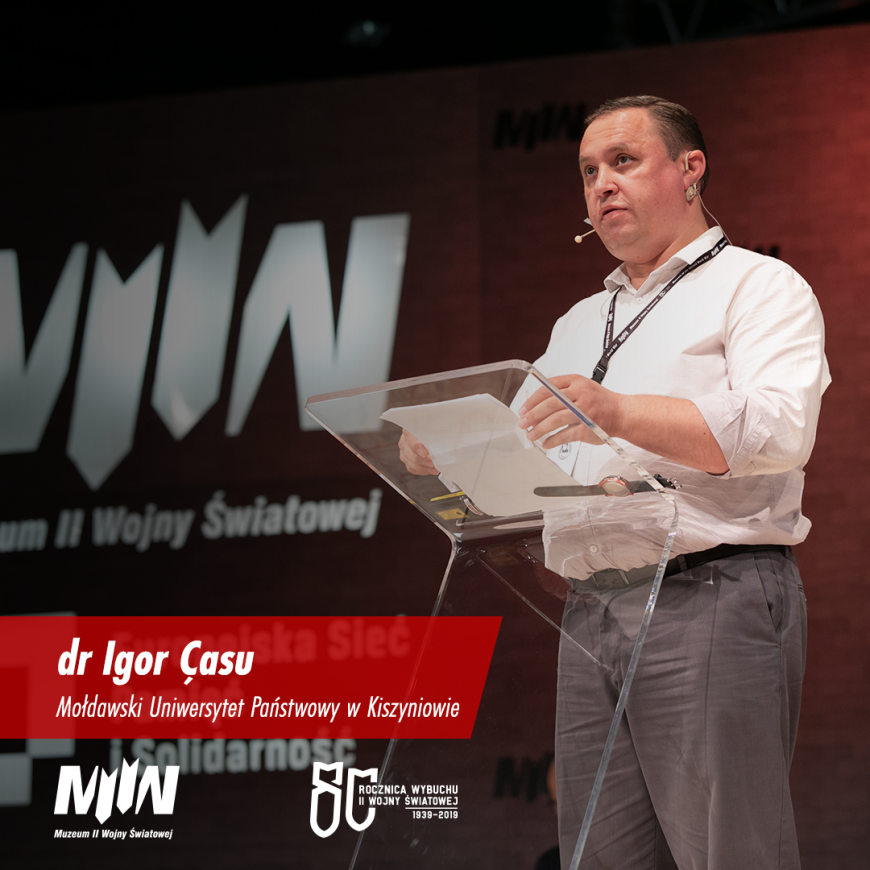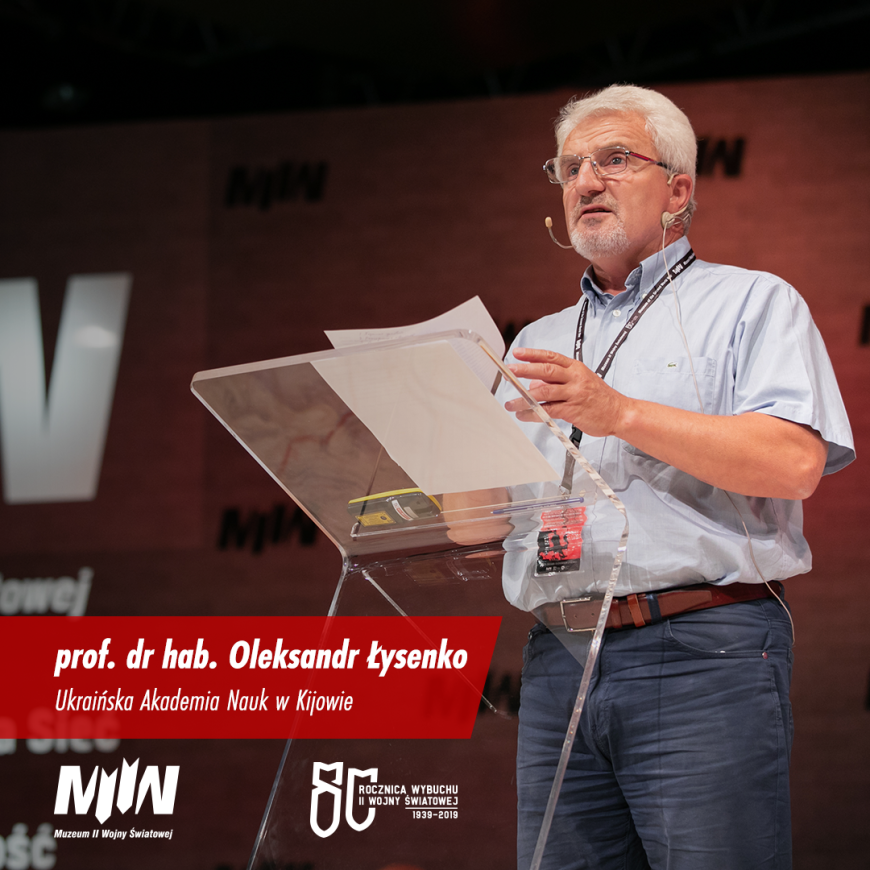International Scientific Conference entitled “The Pact for War. The Collusion of 23 August 1939 Between Hitler and Stalin from a Contemporary Perspective 80 Years After the Outbreak of the Second World War”
On the 80th anniversary of the signing of Molotov and Ribbentrop signing a Pact of aggression against the countries of Central and Eastern Europe, the Museum of the Second World War in Gdańsk along with the European Network Remembrance and Solidarity Institute (Instytut Europejskiej Sieci Pamięć i Solidarność) organised a two-day (23 and 24 August 2019) international scientific conference entitled “The Pact for War. The Collusion of 23 August 1939 Between Hitler and Stalin from a Contemporary Perspective 80 Years After the Outbreak of the Second World War”.
In addition to representatives from Poland, participants included historians and museum workers from the USA, UK, Germany, Lithuania, Latvia, Estonia, Finland, Romania, Moldova, and Ukraine.
During the ceremonial inauguration, Mr Piotr Karczewski, Advisor to Andrzej Duda – the President of the Republic of Poland read a letter penned by the President of the Republic of Poland dr Andrzej Duda, who addressed the assembled thusly:
"(...) I would like to extend my sincere thanks to the organisers of this conference. I am convinced that the strictly scientific, i.e. reliable and objective analysis of the events leading to the outbreak of World War II has great value, and not only from the cognitive point of view. I believe that it is of outmost importance for the future generations to have access to detailed and well-organised knowledge about the process of creating and promoting evil empires, about the possible results of passivity in light of open, actual, and repeated infringements of international standards, in particular those pertaining to conflicts and military action. We need to constantly gather and transfer knowledge on the tragedies that can be brought about by the philosophy of domination and conquest, propaganda cynicism and falsehood, as well as insufficient transparency and a common axiological plane in the actions of states striving for peace and cooperation between the World’s nations.
The ceremonial opening was performed by the host of the conference, Karol Nawrocki PhD, Director of the Museum of the Second World War in Gdańsk:
“The conspiracy of silence between Hitler and Stalin in its main body only had around 300 characters and 7 paragraphs, and only 4 paragraphs in this secret annex with the fourth one obligating the parties to secrecy. For the classic omerta common for totalitarian regimes and criminal organisations, and it was this document that paved the way towards World War II.
Therefore, I am not surprised that leading historical experts specialising in the inter-war period and the diplomacy of that time, as well as those specialising in the abovementioned topic from Europe and all over the world arrived at the Museum today to discuss it.”
The formal inauguration was also attended by Jarosław Sellin - Secretary of State at the Ministry of Culture and National Heritage:
“I think that the organisers have very aptly named today’s conference. The document signed 80 years ago was a pact for war – a pact between Hitler and Stalin, and Ribbentrop and Molotov were executors of their will. Their purpose was to cause war, destroy independent and sovereign states, to enslave nations, to pursue mad goals of the two totalitarian ideologies.”
The official opening of the conference was also participated by Szymon Szynkowski alias Sęk, Secretary of State for the Polish Diaspora, European politics, and public diplomacy at the Ministry of Foreign Affairs, who addressed the gathered participants as follows:
“It is worth to recall the great number of international laws broken by the Ribbentrop-Molotov pact, like the Pact of Paris of 1928, Soviet–Polish Non-Aggression Pact of 1932, German–Polish Non-Aggression Pact of 1934. Breaking these legal acts destroyed the balance brought about by the Treaty of Versailles. On the one hand, the Ribbentrop-Molotov Pact gave Germans freedom to act in the east, and on the other, left western countries in a state of uncertainty in regards to the attitude of the USSR. On September 12th the leaders of Great Britain and France who knew the provisions of the secret protocol decide not to grant aid to Poland should a formal declaration of war be issued. It is also worth to mention that until the outbreak of the war, Poland was one of the few countries that were largely unaware of the fact of signing the secret annex.”
One of the speakers during the inauguration of the “A Pact for War” conference was Mr Rafał Rogulski - Director of the European Network Remembrance and Solidarity who co-organised the conference:
“It is a great honour that the European Network Remembrance and Solidarity was invited to co-organise this event. I would like to extend my sincere thanks to Director Nawrocki. The European Network Remembrance and Solidarity is an international undertaking active within entire Europe. We cooperate in carrying out historical foreign policy in order to support dialogue about the history of the 20th century and about remembrance – the latter notion is especially full of pain and various interpretations. We feel that only by listening to each other, discussing, and exchanging arguments will we be able to reach common conclusions, and even differ, but do so without hostilities.”
The inauguration lecture entitled “Hitler and Stalin: the Forgotten Relationship Between the Two Superpowers of World War II” was given by Roger Moorhouse, author of “First to Fight: The Polish War 1939”:
“In the early hours of 23 August 1939 within the bowels of the Kremlin, Josef Stalin raised a glass to toast Adolf Hitler. He knew how much the German people loved their Führer – he told the assembled dignitaries – and he proposed a toast describing Hitler as Molodets - a thoroughly good chap.
The drinking and toasting had followed the important business of the evening – the signature of the Nazi Soviet Pact, or Molotov-Ribbentrop pact – one of the most important – and least understood – political alignments of the Second World War.
At first sight, the Nazi-Soviet Pact appears to be just what it says it is – a simple non-aggression pact between two states, who – like the many other countries before them who had signed similar agreements in the 1930s – promised to refrain from the use of force in their bilateral relations. Away from the rather anodyne text of the treaty, however, the devil lay in the detail, specifically in the Secret Protocol that was appended to the Pact, the document by which central Europe – Poland, the Baltic States, Romania and Finland – was to be divided between Moscow and Berlin in the event of what was euphemistically called a future “territorial rearrangement”. This protocol alone – though barely a page in length – would directly impact some 40 million people,” Roger Moorhouse said.
The 1st Panel of the “The Pact for War” Conference entitled “Genesis of the Hitler-Stalin Collusion” was hosted by dr Karol Nawrocki, Director of the Museum of the Second World War in Gdańsk. “Neutrality, Playing for Time, Expansion, or Aggressive Preparations for War? The Basis for the Pact Between Hitler and Stalin” were the subject of deliberations of dr Jan Lipinsky of the Herder Institute in Marburg.
Another speaker was Donal O’Sullivan PhD of the California State University who delivered a lecture entitled “The Structure of Imperialism. Territory, Negotiation, and Remembrance. The Hitler-Stalin Pact as a New Aberration”.
“After seventy years of debate, scholarship, interpretation, legend and myth, the Hitler-Stalin Pact of August 1939 still provides evidence for the continuing significance of history in contemporary society and politics. At first glance, it is surprising that an agreement between two of the world’s worst dictators should still be up for debate. Even more, the position on the Pact constitutes a litmus test for political divisions in Europe today. Public memory in different countries follows a divergent pattern, exposing the character of historical memory as a constant and fluid dialogue with the past,” dr Donald O’Sullivan said.
The 2nd Panel of the “The Pact for War” conference entitled “Hitler-Stalin Collusion as a Secret” was hosted by dr Marek Szymaniak, Head of the Science Department. The first speaker to take the stand was dr hab. Bogdan Musiał of the Institute of National Remembrance in Warsaw with a lecture entitled “The German-Soviet Alliance: Difficult Beginnings, Secret Negotiations”:
“For most people, the public opinion, and Poland in 1939, the Hitler-Stalin pact was a surprise. It is interesting how this closeness about, how contact was established. After all, we know that from 1935 to 1938 the Soviet Union and German Reich were extremely distrustful of each other. Today, we of course realise who made which decisions in April 1939 in regards to invading Poland.”
“Leaks and Rumours On the Contents of the Secret Protocol to the German-Soviet Non-Aggression Pact of 23 August 1939” were the subject of deliberations of prof. dr hab. Marek Kornat from the Institute of History Polish Academy of Sciences:
“The state with most information on the Hitler-Stalin Pact obtained from two sources bringing to light the contents of the secret protocol was France. The French ambassador in Moscow notified the Ministry of Foreign Affairs in Paris about the outline of the territorial agreement dividing countries between areas of influence of the two totalitarian powers as early as August 21st - this encrypted telegram is real; it corresponds to the later agreement in the secret protocol. On August 24th, less than 24 hours after signing the document, the same diplomat sent the contents thereof to Paris. The second source was the French embassy in Berlin, where the ambassador, who was transferred there from Moscow, obtained similar information, which was very similar to the information sent in the abovementioned telegram, and also sent it to the French Ministry of Foreign Affairs.
The lecture entitled “The Ribbentrop-Molotov Pact in Soviet and Russian Historiography and Historical Politics. A Short Course” was delivered by dr hab. Jan Szumski from the Institute of History Polish Academy of Sciences:
“Propaganda and political works say that “Poland was created between 1918 and 1920 by forcefully severing lands belonging to Russia, Germany, and Austria” and that “this weak country was brought to life by France, England, and the USA as a battering ram directed against the Soviet Republic. In August 1939 the Noble Poland with a butler-like eagerness begun to carry out the bloody plans of its masters and decided to engage in a war”. So, the 2nd Polish Republic was shown as one of the instigators of the war. Simply put, Poland in Soviet historiography is a rowdy, aggressive country that did everything to destroy the peace in Europe.”
The 3rd panel of the “The Pact for War” conference was devoted to the Hitler-Stalin collusion in contemporary museum narrative. The discussion was participated by directors and museum managers who answered questions about, among other things, the manner of presenting the Hitler-Stalin pact in museums. The panel was hosted by Ms Hanna Mik from the Museum of the Second World War in Gdańsk.
The panel participants were:
Karol Nawrocki PhD - Director of the Museum of the Second World War in Gdańsk,
Dr Kristina Ranki, Director of the Mannerheim Museum,
Hellar Lill, Director of the Estonian War Museum,
Eugenijus Peikstenis, Director of the Museum of Occupation and Freedom Fights,
em. Valters Nollendorfs PhD., Head of the Management Board of the Occupation Museum, Association of Latvia,
Dr hab. Eugen Sava, Director of the National Museum of History of Moldova
Dr Ernest Oberlander-Tarnoveanu, Director of the National History Museum of Romania
The 4th panel entitled “The Consequences of the Hitler-Stalin Collusion for Eastern and Central Europe” conducted on the second day of the conference (August 24th) was hosted by Grzegorz Berendt PhD Deputy Director of the Museum of the Second World War in Gdańsk.
“Ribbentrop-Molotov Pact from the Perspective of International Relations” was the topic discussed by dr Sławomir Dębski from the Polish Institute of International Affairs.
“The Ribbentrop-Molotov pact could be called a treatise for an organised war. Stalin, Molotov, soviet decision-makers all realised what Hitler’s goal was. He wanted to isolate Poland and allow Hitler to start a war. At the same time, he demanded limitation of sovereignty, the idea of the right of self-determination of the nations created in result of the Treaty of Versailles. It was a blow to that treaty, the purpose was to collapse the system to, from Stalin’s perspective, reclaim the borders of the previous empire - from before 1914, from before the Great War. And from Hitler’s perspective - to carry out his plan of gaining a dominant position in Europe.”
dr Kaarel Piirimäe of the Tartu University delivered a lecture entitled “The Hitler-Stalin Pact, Polish Government in Exile, and the Baltic Question During World War II”. Poland fell victim to the Hitler-Stalin Pact in September 1939 when it was annexed by Germany and the USSR. Lithuania, Latvia and Estonia became the pact’s victims in August 1940 when they were annexed by the USSR. Lithuania suffered through the pact but also gained from the collusion, as it was granted the Vilnius/Vilno region at the expense of Poland.
In his lecture entitled “Reaction of Latvian Society to the Implementation of the Ribbentrop-Molotov Pact (1939-1941)” dr Kaspars Zellis of the University of Latvia in Riga outlined a number of problems facing various ethnic and social groups after the signing the Ribbentrop-Molotov pact. Latvian Political police materials allow tracking changes in the state of mind of the population, however, after the occupation by the USSR of 17 June 1940 information is mostly gathered from intermediate sources.
In his lecture entitled “The Ribbentrop-Molotov Pact and Bessarabia. Short and Long-Term Consequences”, dr Igor Çasu of the Moldova State University in Chişinău spoke about the great impact of Soviet occupation on the Bessarabia region in the short and long term. It changed dramatically the life of all ethnical groups, Romanians, Ukrainians, Gagauz, Bulgarian, Jews and others. All of them were subject to state terror in 1940-41 and after the war, especially mass deportations to Siberia, but also executions and mass famine of 1946-47. These experiences had a deep effect on the subsequent decades and are important in order to understand the present day realities of the Republic of Moldova and its sinuous way to get closer to Europe and the West.
Prof. Carl Geust delivered a lecture entitled “Finnish Air Force Organisation During the Winter War of 1939-1940 - a Consequence of the Ribbentrop-Molotov Pact”. In autumn 1939 Finland´s strategic position changed dramatically by the Ribbentrop-Molotov pact, and furthermore the new Soviet bases in Estonia threatened Finland´s vital regions. After resultless negotiations the Red Army attacked Finland on 30 November 1939 on the 1,000 km long border. Finnish infrastructure (ports, railway junctions, factories, military and administrative targets) was bombed; totally over 2,300 Soviet aircraft against 36 fighters and 17 bombers. Helsinki was bombed with 100 victims. The aggressor USSR was 14 December 1939 excluded from League of Nations.
prof. dr hab. Oleksandr Lysenko from the Ukrainian National Academy of Sciences with his lecture “The Ribbentrop-Molotov Pact – a Ukrainian Context”









